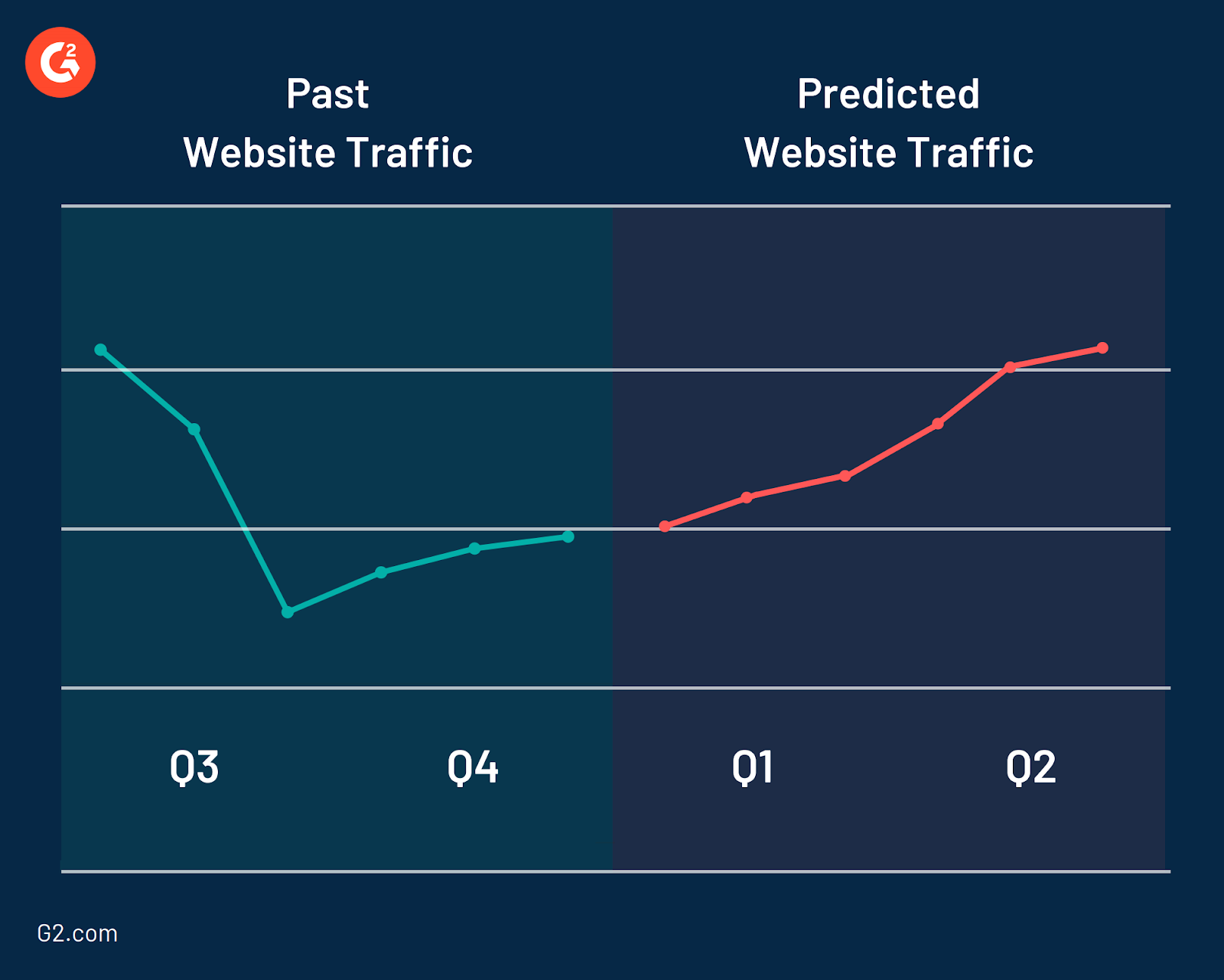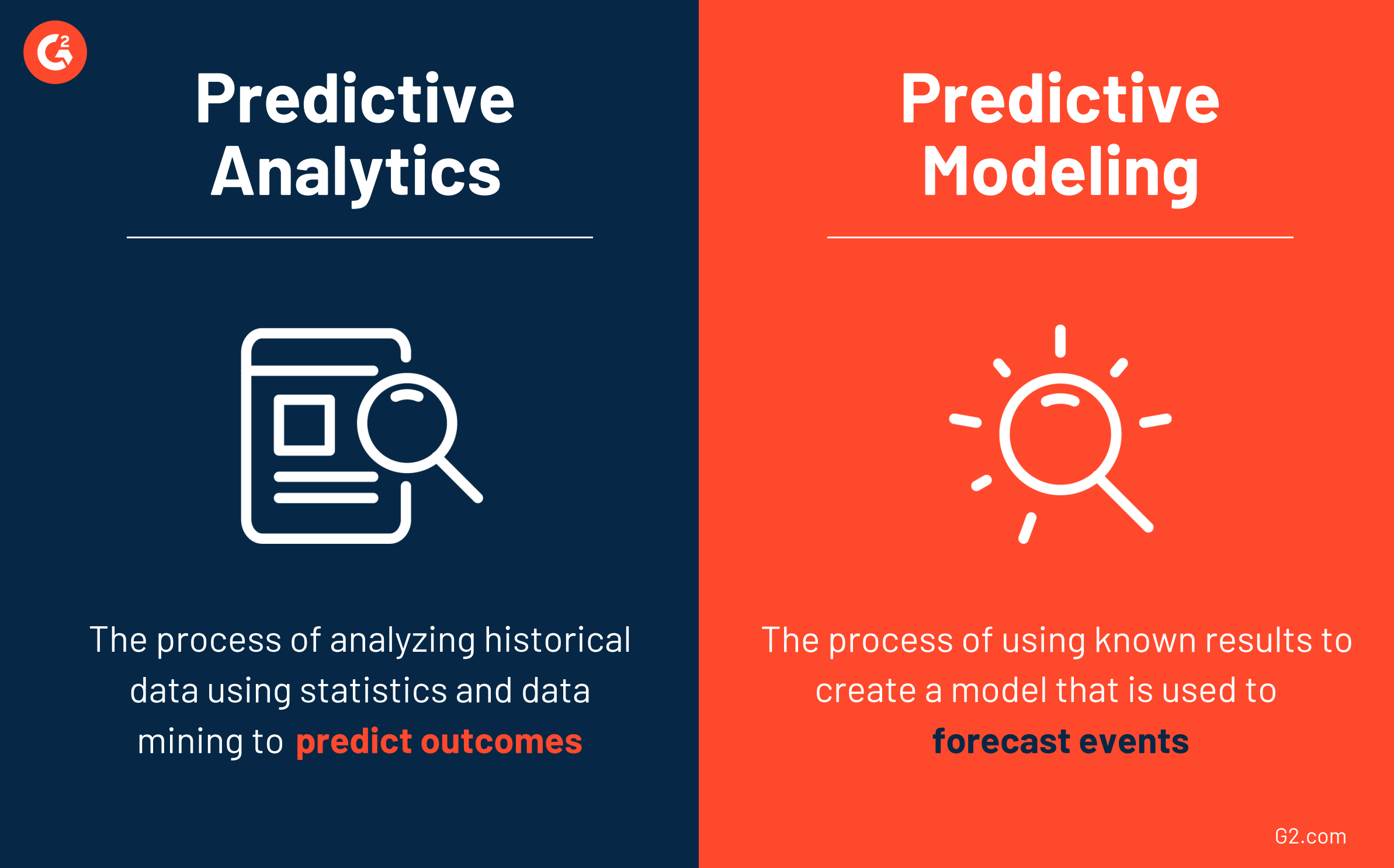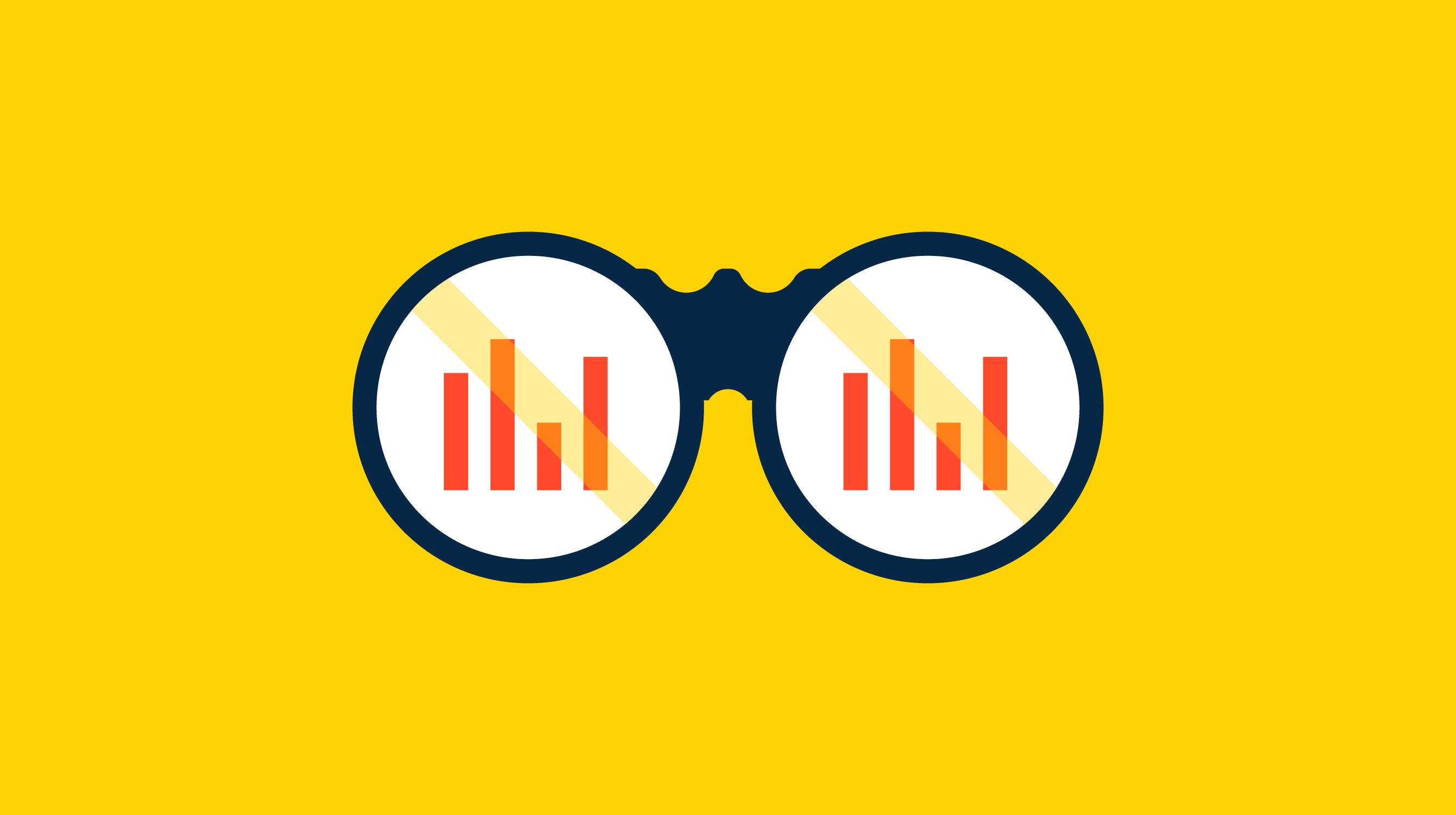Every business wants to increase their bottom line.
One way to do this is to analyze what may happen next, identify and capitalize on opportunities, and prevent financial losses. Predictive analytics software allows organizations to accomplish all these by forecasting potential scenarios based on historical data. These solutions use a combination of machine learning (ML) and deep learning algorithms to find patterns from disparate data sources and provide predictive insights about the future.
What is predictive analytics?
Predictive analytics is an advanced data analytics process that uses data analysis, artificial intelligence, statistical models, and machine learning to analyze historical data and predict future behavior or trends with precision.
Predictive analytics falls under the umbrella of advanced analytics, which also includes data mining, big data analytics, and prescriptive analytics.
Predictive analytics examples
Advanced tools are no longer reserved for large organizations, and many industries today are tapping the uses of predictive analytics. No matter what sort of goal you have in mind, there is a good chance that predictive analytics is the tool your business is looking for.
For example, retailers often use predictive analytics to forecast inventory requirements, manage shipping schedules, and find ways to design store layouts to maximize sales.
Additionally, airlines can use predictive analytics to set ticket prices that reflect past travel trends. Hotels can use this technology to forecast the number of guests to maximize both revenue and occupancy.
Let’s take a look at some other examples of predictive analytics.
Example of predictive analytics in healthcare
A medical diagnosis is one of the best examples of predictive analytics in healthcare. The healthcare industry has adopted analytics to predict negative health outcomes in at-risk patients. These predictions allow for earlier detections of diseases in patients who may not even be experiencing symptoms.
Predictive analytics allow healthcare professionals to take the necessary steps to identify patients most at risk of chronic disease and find what interventions are best. It also can be used in certain medical devices.
As an example, a device for asthma patients that uses predictive analytics can record and analyze the breathing sounds of patients and provide real-time feedback using a smartphone app to help patients better manage their symptoms and be prepared for an attack.
According to a 2017 report by the Society of Actuaries, 57% of healthcare executives at organizations that already use predictive analytics believe it will save 15% or more of their budget over the next five years. The study also revealed that 89% of healthcare executives belong to organizations that are either now using predictive analytics or planning to do so within the next five years.
Example of predictive analytics in manufacturing
In the manufacturing industry, predictive maintenance is crucial to the upkeep of expensive factory equipment. Sensors attached to machinery feed real-time data to analytic tools and can reveal any risky activity as well as better predict when machines are about to fail.
In addition to equipment failures and future resource needs, predictive analytics can also be used to lessen safety and liability risks, as well as improve overall performance.
Example of predictive analytics in sports
Across many sports, predictive analytics are key to maintaining a competitive edge. Predicting player regression and productivity is perhaps one of the largest use cases of analytics in sports today. Even small-market teams use predictive analytics to structure player contracts and avoid mishaps down the road.
Think of the movie Moneyball, which opened viewers’ eyes to the world of sports analytics. The sports industry can predict which player will perform best at which position, or how they'll perform against a rival team. It can be used for player analysis, team analysis, and even fan management analysis, which will determine which factors of the game attract the most fans.
Interested in more examples? Check out these eight predictive analytics examples of industries that are using predictive analytics for long-term success.
Want to learn more about Predictive Analytics Software? Explore Predictive Analytics products.
How predictive analytics works
Predictive analytics works by finding correlations among different data points in a dataset. Start by collecting data and training a statistical model that helps you generate predictions. Once you have the data, follow the steps below to gain insights using predictive analytics.
- Define the need: Like any data analysis process, the predictive analytics process first requires defining a need. Are you looking to predict which pieces of content will perform well? Predict the buying habits of your customers? How about your customer churn rate? Make sure you know the outcomes you're looking to define, as well as your business objectives.
- Collect and organize data: Once you know the needs, collect data from relevant sources like CRM solutions, ERP tools, marketing automation systems, and others.
-
Process data: Raw data may have missing values, anomalies, or outliers. That's why you must use the data mining process to prepare the data from all sources into one primary place for analysis to take place.
- Deploy predictive model: Now, you're ready to deploy a predictive model like decision tree, regression model, or machine learning model that you've created. Next, predictive analytics software mines through the collected data and extracts predictive insights. you can then use data visualization to visualize these insights in a way for users to interpret the results with the objective to make the information as useful as possible.
- Take action: The final step is taking action based on the trends and patterns found. This requires strong business acumen to identify areas of opportunity. Having the assistance of data analysts and/or scientists also helps.
The example below shows a basic predictive visualization on forecasting website traffic after two back-to-back quarters that showed a sharp fall:

To come to this predictive conclusion, you’d need to know the reasons for the sharp fall in traffic. There would also need to be a plan in place that works toward recovering the traffic at a steady pace.
Depending on the complexity of the tool and its niche, the insights and visualizations can vary. So, finding the right tool for your business’ requirements is very important.
There is also prescriptive analytics, which takes insights a step further by providing calculated next steps. However, these analytics are rarely seen today. While predictive analytics create an estimate as to what could happen next, prescriptive analytics tell you how to react in the best way possible to that prediction.
Want to connect predictive insights with real user behavior? Session replay tools help you understand the “why” behind patterns in your data.
Predictive analytics techniques
Businesses use data mining techniques to make sense of their data to implement various goals and potential improvement strategies. They collect raw information and turn it into actionable insights using different predictive analysis techniques.
1. Classification models
A classification model is used to analyze various attributes that are associated with different types of data. When an organization can identify the main characteristics of these data types, they can better organize and classify all data that is related.
Once this method is able to learn from historical data, it segments it into categories in a way that answers “yes” and “no” questions. Some of these questions could be “is this a fraudulent transaction” or “will this loan be approved”.
2. Regression analysis
Regression analysis help users forecast asset values and understand the relationship between two variables, such as commodities and stock prices. These techniques are often used in banking, investing, and other finance models since they’re used to predict a number as they find key patterns in large data sets.
Learn More: For more information on regression models, take a look at the difference between correlation vs. regression.
3. Decision trees
One of the most popular methods for predictive analytics is decision trees, which rely on tree-shaped diagrams to show statistical probability. The method of branching within decision trees shows every possible outcome or a specific decision or choice that may lead to whatever comes next.
This type of model examines data and tries to find the one variable that splits the data into logical groupings that are the most different. They are also the favored method when there are missing variables or if someone is looking for a quick and easy-to-understand answer.
4. Neural networks
A cutting-edge method to predictive analytics is neural networks, which is a statistical algorithm designed to identify relationships between data sets as it mimics the way the brain of a human operates.
5. Clustering models
A clustering model is a type of unsupervised learning that groups data with similar attributes. It uses techniques like density-based spatial clustering of applications with noise (DBSCAN), k-means clustering, mean-shift clustering, hierarchical clustering, and expectation-maximization (EM) clustering using Gaussian Mixture Models (GMM).
6. Time series models
Time series modeling analyzes seasonality, cyclical behavior, and trends by looking at data inputs at a specific time frequency. While using this model, you'll be able to plot the dependent variable over time to discover what has changed and predict what may happen next. Autoregressive (AR), moving average (MA), ARIMA, and ARMA are all commonly used time series models.
Benefits of predictive analytics
Organizations using predictive analytics solutions are better able to optimize their decision-making process, anticipate future events, improve operational efficiency, find new opportunities, and boost customer satisfaction.
- Gain a competitive advantage: Predictive analytics systems enable organizations to analyze and discover historical data patterns. These data insights tell them more about market trends, potential risks, demand fluctuations, and customer behavior. Organizations can use all these data points to tailor their offerings and beat the competition.
- Optimize decision-making process: Predictive modeling provides organizations with crucial data-driven insights that they can use for strategic decision making. For example, predictive analytics can help companies identify the most effective marketing channels and personalized marketing campaigns for these channels to boost conversion rates.
- Improve operational efficiency: Adopting predictive analytics helps businesses to forecast demand and maintain inventory levels accordingly. As a result, organizations can reduce inventory holding costs and stockouts. Manufacturing businesses can also use predictive modeling insights to predict equipment failure and reduce downtime with preventive maintenance.
- Meet customer expectations: Analyzing customer data equips companies with the ability to understand customers' preferences, purchase patterns, product interactions, and browsing history. Organizations can use all these insights to recommend the right products or services at the right time, resulting in improved customer satisfaction and retention.
One of the main draws of using predictive analytics to get a better look at your data is that it makes looking into the future both more accurate and reliable than other tools. When these tools are put into action, users can find ways to save and earn money, increase productivity, and plan for potential scenarios.
At the core of predictive analytics, its main benefit is giving businesses the ability to reduce the cost that is required to forecast potential outcomes, environmental factors, competitive intelligence, and market conditions.
Other benefits of predictive analytics are:
- Detecting fraud, improving pattern detection, and preventing criminal behavior
- Optimizing marketing campaigns by determining customer responses or purchases
- Workforce planning and churn analysis
- Analysis of competitors
Predictive analytics has been around for decades, but as technology advances, so does this technique. More and more organizations are looking to predictive analytics to not only improves their bottom line but to also ensure they have a competitive advantage that leads to their success.
Thanks to technology, there’s an increase in the type of data that can be analyzed. Software is easier than ever to use, and the computers that analyze the data are faster and cheaper. Because of this, predictive analytics isn’t sanctioned to software professionals, mathematicians, and statisticians. Instead, it’s a tactic that anyone can use.
Predictive analytics challenges
Predictive analytics has may challenges that emerge because of data quality, changing data patterns, overfitting and underfitting, and model interpretability.
- Data quality: Insights that you derive using predictive analytics tools are dependent on the quality and quantity of data. Organizations with insufficient or inaccurate data may not be able to fully realize the potential of predictive insights.
- Overfitting and Underfitting: Overfitting refers to the phenomenon of a data model becoming too adjusted to the training data. Underfitting happens when a model tends to oversimplify patterns. Both can be misleading because overfitting may not accurately accommodate new data, and underfitting may not reveal data complexities.
- Changing data patterns: While predictive analysis has many benefits, a predictive model may not return adequate results, especially when the new data significantly differs from the historical data. That's why organizations must use adaptive strategies to ensure a model's training data remains relevant over time.
- Model interpretability: Industries with ethical and regulatory requirements, such as healthcare and finance, must understand how a model predicts and delivers insights.
- Data model monitoring: Data models need to be constantly governed, tweaked, and refined by data analysts and scientists to ensure they're generating the right results. If not, the data your organization uses for forecasting will only predict inaccurate results.
Other challenges that you may encounter when working with predictive analytics are:
- Having the expertise of your staff to understand this statistical model
- Not having the insights needed that can help you take action against future trends
- Some predictive analytics tools can be hard to scale and deploy
Predictive analytics vs. predictive modeling
Predictive analytics can sometimes incorrectly be referred to as predictive modeling or vice versa. While the two are similar, they have some distinct differences.
As previously stated, predictive analytics is used to predict the outcome of unknown future events by using data mining, artificial intelligence, and other techniques. It also identifies risks and opportunities that may await in the future. Additionally, it works to uncover patterns and relationships within the data which allows a business to be proactive regarding the future.
Similarly, predictive modeling is the process of using known results to create, process, and validate a model that can be used to forecast future outcomes. This tool is used in predictive analytics to understand and prepare for what could happen in the future. It can be a somewhat repetitive process as it runs one or more algorithms on specific sets of data to be able to come up with a multitude of outcomes.

Predictive modeling uses two types of “models” to predict outcomes: parametric and nonparametric.
Parametric models make one or more assumptions about the future and can make specific assumptions about the characteristics used in creating a model. These are often called “parameters” that can predict where a future data point will fall.
Nonparametric models involve fewer assumptions because there is often more subtle or vague information about a model. Predictions made with nonparametric models tend to use larger data sets and be less accurate.
Top 5 predictive analytics tools:
*These are the five leading predictive analytics software solutions from G2’s Spring 2024 Grid® Report.
Embrace your inner oracle
Predictive analytics uses statistical methods to forecast future outcomes, but it’s up to a business to interpret the results and take action. That’s why it’s important to have the right tool and team on hand for any analytic project, especially one that involves prediction and forecasting.
To help you on your hunt for the right tool as you embark on the predictive analytics journey, checkout our roundup of the best business intelligence platforms on the market.
This article was originally published in 2020. It has been updated with new information.

Mara Calvello
Mara Calvello is a Content and Communications Manager at G2. She received her Bachelor of Arts degree from Elmhurst College (now Elmhurst University). Mara writes customer marketing content, while also focusing on social media and communications for G2. She previously wrote content to support our G2 Tea newsletter, as well as categories on artificial intelligence, natural language understanding (NLU), AI code generation, synthetic data, and more. In her spare time, she's out exploring with her rescue dog Zeke or enjoying a good book.
